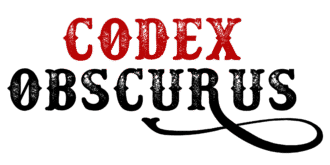
If you’re looking to publish your book and immediately thought of Amazon Kindle, you’re not alone. With over 1.5 million self-published books released every year, Amazon Kindle Direct Publishing (KDP) has become the go-to platform for new authors.
It’s fast, it’s accessible, and it places your ebook on the largest online bookstore in the world. You upload your manuscript, pick a cover, and within 72 hours, your book can be live on Amazon’s digital shelves.
That kind of convenience feels like a win, especially when you’re just starting out and looking for any way to get your work in front of readers.
But ease of entry doesn’t equal long-term success. Once you start digging into the publishing experience, you realize how much of your control, creativity, and even potential profit gets handed over to the platform. What seems like a dream setup at first can quickly turn into a bottleneck that holds your author career back.
In fact, many successful indie authors, myself included, have discovered through trial, error, and painful royalties that relying entirely on Amazon Kindle books can hurt your growth more than help it. If you’re planning to make a living from your writing or build a real author brand, you’ll want to read this closely. Here’s why.
Amazon Controls Your Pricing and Promotions
When you self-publish on Amazon through KDP, you don’t get full control over your pricing strategy. Amazon requires that you stick to a specific pricing range if you want to earn the standard 70% royalty, typically between $2.99 and $9.99.
Step outside that range, and you get slapped with a 35% royalty rate, even if you’re selling a premium product. That means if your book is worth more, say it’s a comprehensive guide, a niche resource, or part of a high-value series, you’re penalized for pricing it accordingly.
Amazon essentially tells you what your work is worth, and there’s little room to argue.
And promotions? Unless you’re enrolled in KDP Select (which comes with exclusivity requirements), your options are limited. You can’t run price drops whenever you want or create flexible campaigns tied to your email list or audience behavior.
Authors often think publishing is the hard part. It’s not. Getting people to find and read your book is the real challenge.
Even when you do opt in, you’re often forced to rely on Kindle Countdown Deals or Free Book Promotions, which, from my experience, are designed to boost Amazon’s traffic more than your long-term sales.
I’ve run promos where downloads spiked for a day or two, but reviews stalled, and the visibility vanished as soon as the promo ended. You get a sugar high, not sustained growth.
You’re not running your business. Amazon is—with rules, restrictions, and revenue caps that often make it feel like you’re just a content supplier for their platform rather than a business owner with a product to sell.
The Royalty Trap
Here’s where the numbers get tricky. Let’s say you price your Kindle ebook at $10.99, a fair price for a 400-page novel that took months (or years) to write. Maybe you hired an editor, paid for cover design, and invested in marketing.
You’re thinking long-term value, not throwaway content. But the moment you cross that $9.99 threshold, Amazon drops your royalty from 70% to 35%, slicing your profit in half. Why? Because you dared to value your work above the invisible ceiling Amazon has set.
That 35% cut feels like punishment for pricing with intention. You’re not selling a pamphlet. You’re offering a full-length book with substance, story, and skill. But Amazon’s system doesn’t care. It’s built to favor mass-market volume over individual value.
Now compare that with platforms like Gumroad, Payhip, or even selling directly through your own website, where you keep 90% or more of the revenue. You set the price. You own the sale. And you’re not forced into awkward decisions just to keep your earnings from vanishing.
Even Apple Books offers more favorable royalty rates without locking you into narrow pricing rules. That flexibility gives you room to grow, test premium offers, and position yourself where your book fits, not where Amazon wants to keep it.
This isn’t a small discrepancy. For every $1,000 you make on Amazon, you could be making $2,000 elsewhere, without bending your value or shrinking your worth just to fit into someone else’s box.

KDP Select and Its Exclusive Grip
KDP Select is Amazon’s loyalty program, except the loyalty flows one way. If you join, your ebook must be exclusive to Amazon for 90 days. That’s three months where your hands are tied.
You can’t offer your book on Kobo, Nook, Google Play Books, or even through your own website, even if readers prefer buying there or you want to run your own promotions.
I remember testing KDP Select with one of my earlier releases. At first, it sounded promising—access to Kindle Unlimited, more visibility, the ability to run deals.
But when I started getting emails from international readers asking why they couldn’t find my book on their platform of choice, I realized what I had given up. I had locked myself out of entire markets and sales channels for a temporary bump in exposure.
You lose access to international audiences who shop elsewhere or who don’t use Amazon at all.
You also lose the flexibility to bundle products, offer bonuses, experiment with different pricing models, or even build a proper sales funnel that guides your readers toward future books, courses, or services. It’s like building a beautiful storefront, only to hang a sign that says “Available in one mall only.”
You’re boxed into a single store, with no way to diversify. And when that store is crowded, algorithm-driven, and constantly changing its rules, you start to feel less like an author in control, and more like a tenant under a very strict lease.
Your Book Might Never Be Found
Uploading your ebook to Amazon doesn’t guarantee visibility. In fact, it barely scratches the surface. Over 8,000 new books are published on Amazon Kindle every single day.
That’s not a trickle. It’s a flood. Your book enters a digital ocean where established names, ad-heavy releases, and algorithm-savvy authors dominate the front shelves.
If you’re not running Amazon ads, building external traffic, or optimizing every inch of your metadata like a pro, your book sinks fast. I’ve seen it happen firsthand—excited to hit “publish,” only to search for the title the next day and find it buried ten pages deep under unrelated results.
You think you’ll show up in your category. You assume your keywords are solid. But Amazon has its own invisible levers, and unless you play by their ever-shifting rules, your book quietly disappears into the void.
You wake up to different rules, and suddenly, what worked yesterday no longer works today.
Authors often think publishing is the hard part. It’s not. Getting people to find and read your book is the real challenge. Visibility isn’t earned by merit. It’s paid for, or engineered through meticulous back-end work.
And even when you’re doing everything right, Amazon’s algorithm can suddenly reshuffle rankings, recategorize your book, or push it off the radar during quiet policy updates or cleanups. I’ve had books that were ranking in the top 100 of a niche category vanish from that list overnight—no warning, no flag, no explanation. Just gone.
That kind of instability makes it nearly impossible to build predictable momentum. You’re constantly scrambling to be seen, even when your book deserves the spotlight.
Amazon Changes the Rules at Will
If you’re building your business on Amazon, you’re building on rented land. And the landlord changes the rules whenever it pleases—no notice, no discussion, no consideration for how it affects your earnings.
In the past few years alone, Amazon has pulled some major moves that hit authors hard:
- Reduced author visibility in niche categories, making it harder for specialized books to rank or even be discovered
- Deleted thousands of book reviews without explanation, including legitimate ones from real readers
- Changed their royalty calculation method for Kindle Unlimited, shifting from paying per download to paying per page read, crushing the revenue of short story authors overnight
I’ve seen author friends lose hundreds of hard-earned reviews after Amazon’s bots flagged them for vague “violations.” No appeals, no details. Just gone. I’ve had to completely rethink my pricing strategy after they changed how royalties are calculated under certain programs.
These aren’t minor adjustments. They’re profit-shaking decisions made without input from the very people providing the content that keeps their platform alive.
And when these changes happen, they affect your income overnight. You wake up to different rules, and suddenly, what worked yesterday no longer works today. There’s no real recourse. You either adapt or lose money. And adapting isn’t always easy when your income is tied to systems you don’t control.
No Access to Customer Data
One of the biggest disadvantages of publishing on Amazon Kindle is the complete lack of customer data. You don’t get names. You don’t get emails. You don’t get direct access to your readers, no matter how many copies you sell.
And that’s a serious problem. You can’t:
- Build an email list to nurture your audience or announce your next release
- Run targeted promotions based on buying behavior or genre interest
- Ask for reviews directly, even from your most loyal readers
It’s like speaking to a crowd behind a curtain—you know people are there, but you can’t see them, reach them, or thank them. I’ve had moments where my book spiked in sales, and I had no idea where the readers came from, who they were, or how to invite them to the next launch.
Your audience belongs to Amazon. You’re building your fanbase on their platform, under their rules, with zero access to the actual people supporting your work. The only way to change that is to get readers off Amazon and onto your own list, but that’s easier said than done.
When your primary call-to-action leads back to a massive storefront like Amazon, getting them to click away and sign up elsewhere feels like dragging them uphill in the rain.
And without that direct connection, building a long-term, loyal readership becomes a lot harder. You’re publishing into a void, hoping someone shouts back.

Return Abuse and Fake Reviews
Amazon’s return policy allows readers to return Kindle ebooks within 7 days, even if they’ve read the entire book cover to cover. That might sound fair on the surface, but in reality, it opens the door to abuse. Some readers treat Kindle like a library with no due dates.
They download books, binge them in one sitting, and then request a refund, never paying a cent. And the worst part? The author still gets penalized. Your royalties vanish, and your sales metrics get skewed.
I’ve seen my sales dashboard light up for a few days, only to watch those same numbers drop back down once the refunds start rolling in. It’s frustrating. You know people are reading your work, but they’re not compensating you for it. It’s like setting up a tip jar and watching people take money out instead of putting it in.
And then there’s the issue of fake reviews, both positive and negative. On one of my book launches, I got hit with a string of 1-star reviews within 24 hours, all saying things like “poor formatting” or “bad quality.”
No downloads. No verified purchases. Just sabotage. It’s disheartening because those reviews drag your average down and scare off potential readers, especially early on when you’re trying to gain momentum.
Amazon’s review system is built to scale quantity. It rewards volume, not fairness. There’s no meaningful protection for authors against malicious reviews or organized takedowns. You can report them, sure, but the chances of getting them removed are slim. Meanwhile, the damage is done, and your reputation takes the hit.
Poor Branding and Formatting Freedom
Amazon’s ebook reader is clean, but it’s also bland. The stripped-down formatting might work for basic readability, but it gives you almost zero creative control. You can’t customize fonts, colors, layout, or brand design the way you can with a PDF or on your own website.
There’s no room to add visual identity, tone, or even subtle design elements that reflect your author brand.
That also means there’s no space for brand storytelling, cross-promotion, or creative packaging—no place to link to your newsletter, showcase related books, or include exclusive bonuses. You’re forced to fit your work into a generic template that looks identical to everyone else’s.
Whether you’re writing a cozy romance or a gritty dystopian thriller, the reading experience feels the same, and that takes away one of your biggest tools for connection: atmosphere.
For authors looking to build a professional brand, this is a major problem. Readers aren’t just buying words. They’re buying into your world. And when your book looks and feels like every other ebook on the platform, it’s harder to stand out or make a lasting impression.
To me, it always feels like I’ve had to trade personality for distribution, as if I handed over my voice to fit into Amazon’s mold. You get the reach, sure, but your book loses its identity in the process.
So, Is It Worth It?
Publishing on Amazon Kindle can work for a while. If you’re just starting out, it gives you exposure and a stamp of credibility that can be helpful early on. It feels good to see your book live on the world’s biggest online bookstore.
You can tell friends it’s available globally. You get those first few sales and maybe even a few reviews. That early momentum can be exciting.
But if you’re serious about writing as a business, relying on Amazon is like setting up a lemonade stand in someone else’s front yard. You might catch some foot traffic, but you’re at the mercy of rules you didn’t write.
If the owner decides to shut it down, move the stand, or change the terms, you’re finished. That’s not a real business. That’s a gamble.
Your book enters a digital ocean where established names, ad-heavy releases, and algorithm-savvy authors dominate the front shelves.
I’ve been there. I published early books, thinking Amazon would carry me. It helped me get started, but it also boxed me in. It took losing control of my pricing and watching my royalties vanish after a policy shift to realize I needed a better strategy.
I believe the smarter strategy is this: use Amazon Kindle as one distribution channel, but never the only one. Build your own audience where you can speak directly to your readers without gatekeepers. Own your customer data so you can grow your list, sell directly, and launch future books on your terms. Price your work the way it deserves to be priced, not within limits set by someone else’s profit model.
The moment you stop playing by Amazon’s rules and start setting your own, your author career stops being dependent and starts becoming sustainable.
And that’s where real freedom begins.




